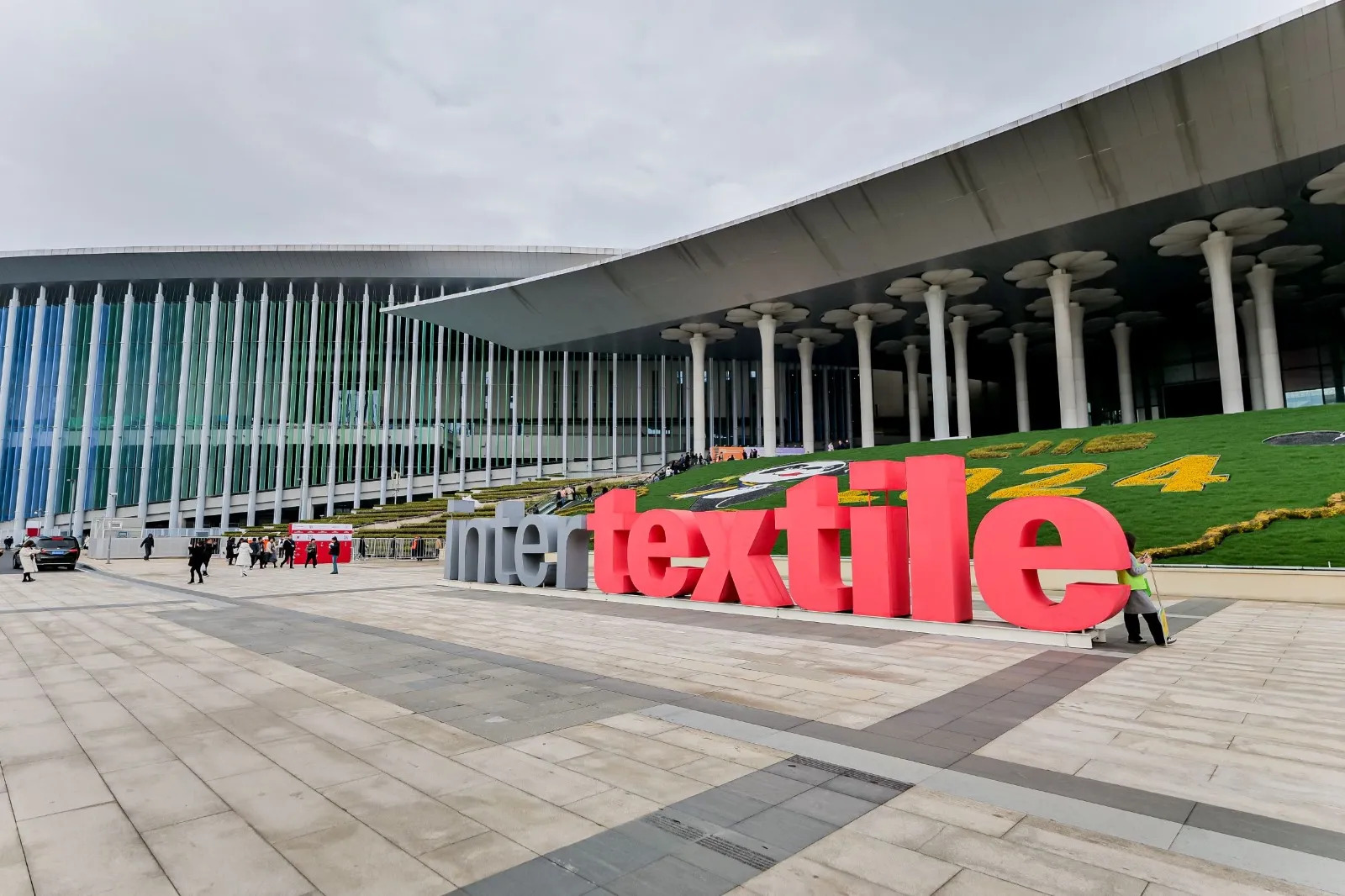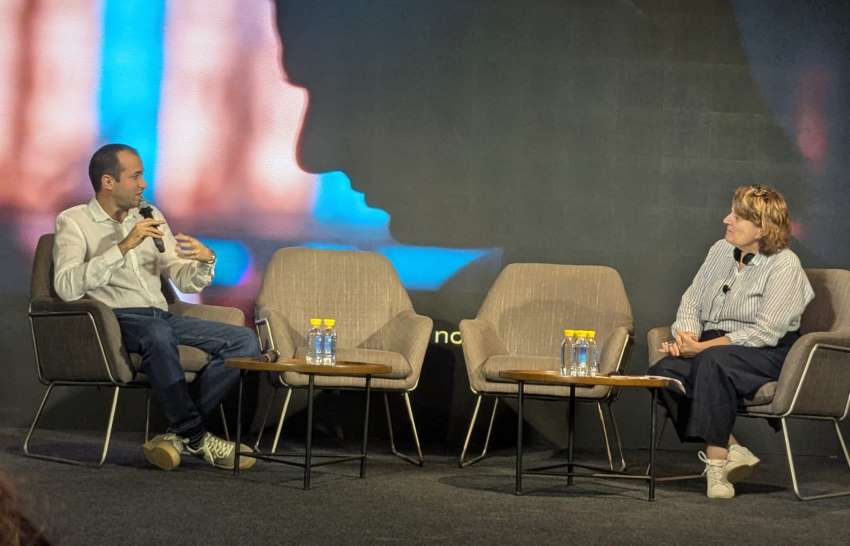FW
Exports of apparel accessories and clothing moved up in the first 10 months of last year. From January to October 2016, the country exported garments and clothing accessories worth 836.7 million dinars an increase of 1.7 per cent over exports of 822.8 million dinars made in the corresponding period of 2015.
Overall, garment exports accounted for 22.89 per cent of around 3.655 billion dinars exports by Jordan during the ten-month period, according to a data released by the Jordanian Department of Statistics. Category-wise, exports of accessories of knitted or crocheted apparel and clothing earned 792.129 million dinars showing a 1.27 per cent jump over exports totaling 782.130 million dinars made during the same period in 2015.
Exports of non-knitted garments shot up by 9.62 per cent year-on-year and contributed 44.570 million dinars during the period under review. In October last year, Jordan’s exports of knitted apparel and accessories increased by 10.5 per cent to 68.315 million dinars as against exports of 61.821 million dinars made in the corresponding month of last year. The textile and clothing sector in Jordan employs about 24,000 people with major players being American Jordanian Company for Apparel (Jordache), Casual Wear Apparel LLC, Central Clothing Company, EAM Maliban Textiles, El Zay Ready Wear Manufacturing, Golden Fingers, and Prime Five Garment Manufacturing among others.
In its December sales report, GAP Inc, the US-based apparel retailer has reported its net sales moved up 1 per cent in November and December 2016 compared to that of last year. On the other hand, its comparable sales stood at a positive 2 per cent for the same period as against that of last year.
Delving on the topic, Sabrina Simmons, Chief Financial Officer, Gap Inc says his company was pleased with the improved momentum that was seen over the holiday season driven primarily by a positive customer response at Gap and Old Navy. Based on these results, the company now expects a full-year adjusted earnings per share to be modestly above the high end of our previous adjusted guidance range of $1.92.
The apparel brand also unveiled its net sales and comparable sales for the five-week period that ended December 31, 2016. The net sales surged 3 per cent to $2.07 billion compared to $2.01 billion the last year. Also, the company’s comparable sales were up 4 per cent as against a 5 per cent decrease last year.
In the period under review, comparable sales of Banana Republic Global were down 7 per cent as compared to a negative 9 per cent for the same period last year and Old Navy Global stood at positive 12 per cent when compared to negative 7 per cent last year. On the other hand, GAP Global generated positive 1 per cent comparable sales against negative 2 per cent last year for the reporting period.
To facilitate development of Rs 1,800 crores mega textile park at Pinjrat the Southern Gujarat Chamber of Commerce and Industry (SGCCI) will sign a MoU with the Gujarat government during the course of the Vibrant Gujarat summit. Disclosing details, SGCCI president B S Agarwal said the mega textile park is a dream project and that will change the face of Surat's textile sector. The Gujarat government will allot 70 lakh sq. mt. land on Pinjrat near Olpad.
The SGCCI has appointed around 15 directors to head the SPV for the mega textile park. The project conceived by the SGCCI will accommodate around 100 textile processing units, 40 water jet weaving units, around 225 garmenting units and other textile ancilliary units, attracting a total investment of Rs 10,000 crores.
As per the proposed, the park will house giant textile processing units, each having average capacity of manufacturing over three lakh mt. of fabric per day. Around 50 per cent of the fabric manufactured in the processing units will be converted into home textiles and garments. The rest of the fabric will be sold outside the state. Presently, the textile sector contributes around 40 per cent of the synthetic cloth in the country. But its share in export is meager because the export market requires huge quantity of cloth of same quality which cannot be supplied by the processing units in Surat.
In order to bridge the gap between production and consumption of raw cotton, Pakistan will have to foot a bill of around $1.58 billion for import of 4.5 million bales (170 kg each). In 2015-16, cotton production clocked up to 15 m bales in 2014-15 and 9.5 m bales. It is expected to be around 10.54 m bales in 2016-17.
Though Pakistan is the third largest raw cotton exporter it has been an importer for the last two years. Last year, the country imported around 2.7m bales from India at a cost of $800 m. The country has also lost its fourth position in the world in terms of the production of raw cotton. There was a time when Pakistan was the largest exporter of cotton yarn globally, says Asif Inam, Chairman of the All Pakistan Textile Mills Association (APTMA) for the Sindh-Balochistan zone.
About two months ago, cotton prices in India were low owing to higher cotton production estimates, Inam says. But prices have moved up substantially now, making the import of cotton from across the board costly, he added. In the beginning of the cotton season in India in October, prices were as low as Rs 35,000 per candy (356kg). More recently, the prices soared to Rs 50,000 per candy due to the intervention of the Cotton Corporation of India (CCI).
Highlighting the challenges being faced by millers in Pakistan, the textile industry has come up with a set of recommendations for its revival with the help of a growth-led strategy as exports have consistently weakened over time. All Pakistan Textile Mills Association (APTMA) chairman Aamir Fayyaz outlined the proposals at a meeting with Trade Development Authority of Pakistan (TDAP) chairman SM Muneer. They discussed restoration of the viability and growth of the textile industry.
Fayyaz pointed out the exports had slid because of high cost of doing business. In the previous fiscal, trade deficit reached $28 billion as exports dropped to $19.5 billion from $24.5 billion in 2013. He suggested the government should remove customs duty on import of cotton, allow duty-free import of all man-made fibres that were not being manufactured in the country and permit the drawback of taxes and levies at 4 per cent on export of yarn and grey fabric, 5 per cent on processed fabric and 6 per cent on home textiles, made-ups and garments.
He said the government should allow long-term financing facility, input tax refund on packaging materials under the zero-rated regime and lift the moratorium on new gas/re-gasified liquefied natural gas (LNG) connections for captive power plants. He proposed that a multi-year tariff, determined by the National Electric Power Regulatory Authority (Nepra) for the industry, should be notified without including the surcharge, which would make available electricity at the regionally competitive price of Rs7 per kilowatt-hour.
Revealing that $3.5 billion worth of industry capacity was shut, he emphasised the need for bringing that capacity back to production as well as restoration of investor confidence in order to encourage them to execute their investment plans. Speaking on the occasion, the TDAP chairman said exports should always be the top-most priority of the government for instilling confidence in the entrepreneurs.
The Maharashtra government has decided to set up a Rs 300 crore garment park in Solapur to promote the city as a 'major garment hub'. Nearly 27 acres of land belonging to the erstwhile Narsing Girji Mill in Solapur has been identified, says state textile minister Subhash Deshmukh.
The minister was inaugurating the three-day international exhibition on uniform and textiles in Solapur. The exhibition is being hosted by Shree Solapur Readymade Garment Manufacturing Association in co-ordination with the Maharashtra Textile Ministry and Mafatlal Fabrics. The bhoomi pujan (ground breaking ceremony) of the park would be held on January 26. The government will provide all required infrastructure to successfully complete and launch this Garment Park.
Amit Kumar Jain of Shri Solapur Readymade Kapad Utpadak Sangh said the total cost for the garment park would be around Rs 300 crores. The park will generate enough employment potential which will provide employment to over 60,000 bidi workers, besides other unemployed persons.
The uniforms industry including school, corporate wear and government forces is worth over Rs 18,000 crore of which nearly Rs 10,000 crore is in the organised sector. Of the rest, Solapur contributes nearly Rs 1,100 crore with uniforms churned out from around 1,000 plus manufacturing units in the city employing over 60,000 skilled workers.
The winter edition of Ethical Fashion Show will be held in Berlin from January 17-19. Bernhard Felmberg of the Federal Ministry for Economic Cooperation and Development will be among the speakers where he will provide an update on the work of the German Partnership for Sustainable Textiles.
Highlights of the trade fair are: two fashion shows, 'Salonshow' and 'Ethical Fashion on Stage' as well as presentations, panel discussions and press tours. The fashion show will be presented in a new location, the Energie forum by the River Spree.
At the Salonshow on January 18, collections will be from a range of eco fashion labels including Austriandesign.at, Biaggi, Blue Valley, Inti Ferreira, Johanna Riplinger, Lanius, Lanius X Kunert, Royal Blush, Somyso, Studio Elsien Gringhuis, Studio Jux and Xess+Baba. Later that day, the 'Ethical Fashion on Stage' show will present looks by B Frog, C. Pauli, Chapati, Colombo3, Elementum, Greenbomb, Jaspe, Komodo, Naturaline, Organication, Shirts for Life, Tranquillo and Ukua Lov Baby. To finish the show, lavera Naturkosmetik will present the winner of the lavera Green Fashion award.
The HC has approved the amalgamation of Balkrishna Synthetics with Siyaram Silk Mills. Balkrishna Textiles was established in 1979 has over the years earned reputation as textile processors in the domestic and overseas markets. The company currently exports its product range made up of textiles and home textiles to the EU countries, US, CIS and exports fabrics to Indonesia, Malaysia, Middle East and Gulf countries. The company is into dyed and printed cotton fabrics and polyester fabrics, scarves, bottom weights, shirtings and corduroy fabrics, coated fabrics and value adds.
Siyaram, incorporated in 1978 and based in Mumbai, is a maker of blended fabrics and is a garment manufacturer, with an associated chain of retail outlets and branded showrooms. With a rich legacy of over 30 years, its bespoke men’s wear fashion is synonymous with high quality, continuous innovation and iconic futuristic designs which are local at heart and international in appeal.
Siyaram is India’s largest producer of blended high fashion suiting /shirting fabrics, manufacturing over 60 million meters of fabric annually. It has state-of-the-art manufacturing plants at Tarapur, Daman and Silvassa. An integrated distribution network, with over 0.1 million retail footprints across the country, makes high octane fashion accessible to the masses and the classes.
"The Hong Kong Trade Development Council (HKTDC) will launch this style show from Jan. 16-19at the Hong Kong Convention and Exhibition Centre. Marking its 48th anniversary, Hong KongFashion Week will feature approximately 1,500 international exhibitors focused on athleisure and trendy informal clothing."

For a seamless sourcing experience, the fair will be separated into 20 thematic zones for visiting buyers. The thematic zones will be divided by different categories, including the first-time appearances of Fashionable Sportswear and Casual Wear areas.
The Fashionable Sportswear zone would reflect the global affinity for fitness-oriented clothing. As wellness has become a worldwide trend, especially in the apparel market and athleisure has gained momentum in key fashion hubs such as Hong Kong. According to Euromonitor, the Chinese sportswear market has expanded by 11.3% year-on-year to $23,950,705,350 in 2015. HKTDC added the Fashionable Sportswear zone to incorporate the latest sports styles and provide business opportunities for buyers in the athleisure sector.
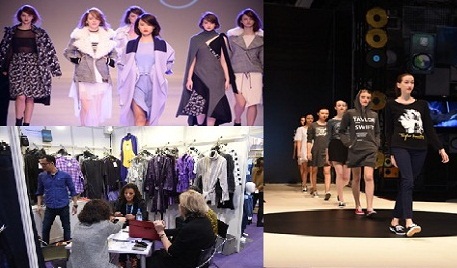
Casualwear has also become a popular trend in China, as the nation’s millennial dress more informally. Many Chinese and global brands are focusing on selling casualwear with trendy elements and fast turnaround times. The Casual Wear zone will be established for buyers that are interested in this relaxed apparel trend.
Other zones at Hong Kong Fashion Week include Thermal Clothing for cold-weather garments, clothing accessories for buyers interested in apparel embellishment, Men In Style, Fabric & Yarn, Knitwear and the International Fashion Designers’ Showcase.
Meet industry players and gather market intelligence at exciting events
The fair promises an exciting event line-up of fashion shows and parades, including the Brand Collections’ Show, Designers’ Collection Shows and the FASHIONALLY COLLECTION show which showcases the creative talents of the local new design forces. Experts from international trend forecasting agencies and industry professionals are invited to unveil the latest fashion trends and share updated market information at seminars and forums. Networking receptions will also be held to help participants expand their network of contacts and gather the latest market intelligence.
"Bangladesh's RMG exports to the global market rose by over 9 per cent to over $26 billion from Jan-Nov 2016. This growth rate is not sufficient to attain the $50 billion export target by 2021 as the sector needs over 12 per cent growth to realise the vision. Experts attributed remediation process, which helped improve safety standards-to the increased production capacity. Upon completion of remediation, some RMG units have received more orders from buyers who were satisfied with the safety progress, they argued."
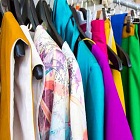
Bangladesh's RMG exports to the global market rose by over 9 per cent to over $26 billion from Jan-Nov 2016. This growth rate is not sufficient to attain the $50 billion export target by 2021 as the sector needs over 12 per cent growth to realise the vision. Experts attributed remediation process, which helped improve safety standards-to the increased production capacity. Upon completion of remediation, some RMG units have received more orders from buyers who were satisfied with the safety progress, they argued.
As per World Trade Organisation (WTO), the global clothing export market has contracted by around 7.8 per cent to $445 billion in 2015. In 2014, the global apparel export was $483 billion while the global RMG export market is expected to reach $650 billion by 2021.
Production to get a boost
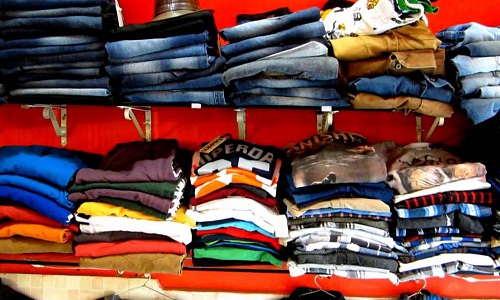
According to the data of Export Promotion Bureau (EPB), during January-November 2016, Bangladesh earned $26.09 billion, exporting clothing products, which is 9.03 per cent higher compared to $23.93 billion a year ago. Knitwear products fetched $12.56 billion with an 8.22 per cent rise compared to $11.60 billion in the previous year while woven products earned $13.53 billion, which is 9.78 per cent higher compared to $12.32 billion a year ago.
Exporters Association of Bangladesh President Abdus Salam Murshedy expects a double digit growth as the production capacity as well as the volume of work orders have increased because of safety improvement and remediation completion in most factories. Last year production was hampered due to the ongoing remediation to improve safety standard in workplaces for ensuring workers' safety. After the full-fledged completion of Corrective Action Plans (CAPs), the work order flow would increase and it would be possible to attain a double-digit growth, added the business leader.
According to Mahmud Hasan Khan Babu, VP, BGMEA, the sector has seen less investment as manufacturers had to spend a lot on remediation and safety improvement. Experts feel that in order to expand, RMG sector requires investment to increase production capacity for gaining more global market share. Gas connection is a big challenge for Bangladesh's RMG. The country has to work on technology up-gradation and high-end products. Bangladesh has to now focus on capacity building and set strategies to move to high-end and branded fashion segments. Currently, about 79 per cent of Bangladesh export items are concentrated in five basic products – trouser, t-shirt, sweater, shirts and jackets mostly made of cotton.
Another priority area is market diversification as Bangladesh's apparel exports are mostly concentrated on EU and North America. Non-traditional market is the key element to enlarge the export volume. The contribution of non-traditional markets to total export was 2 per cent in FY2005-06, which has increased to 15 per cent in FY'16.

